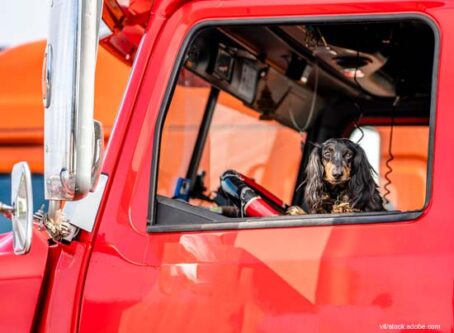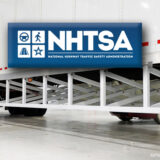Driverless trucks will not solve the trucking industry’s problems
Autonomous vehicle companies are claiming the technology will make roadways safer, but when it comes to driverless trucks, it’s all about money while ignoring ongoing efforts to improve safety within the trucking industry.
Self-driving truck company Aurora is set to deploy driverless trucks in Texas at the end of this year. To highlight this first-of-its-kind autonomous truck operation, Partners for Automated Vehicle Education (PAVE) set up a panel discussion with key stakeholders: Aurora Founder and CEO Chris Urmson, Texas Department of Transportation Executive Director Marc Williams and Texas Trucking Association President and CEO John Esparza.
Explaining the need for driverless trucks, the panel honed in on three factors: safety, economy and addressing issues within the trucking industry. At this point, the safety of truly self-driving vehicles is debatable. Economically, autonomous trucks have the potential to move a larger volume of freight with 24/7 operations.
But when it comes to addressing trucking industry issues, the Texas Trucking Association is continuing a failed approach that is popular among large carriers: technology.
Drivers wanted
During the panel discussion, the debunked driver shortage myth was referenced several times. However, Aurora and the Texas Trucking Association benefit from convincing the public and government officials a shortage is real.
Here’s Urmson’s take on the job of a truck driver:
“These are people doing a job that we absolutely need. The country does not exist without their hard work and their sacrifice, but it’s a really tough job. It’s days if not weeks away from home. It’s a shortened life expectancy. It’s missing out (on) critical moments in their family’s lives. That if you’re a truck driver in America, you’re 10 times more likely to die on the job than the average American. That leads to the fact that we don’t have enough people willing to do the job.”
Urmson is right about most of what he said. Trucking is a tough, dangerous, time-consuming job. In the past, it was a way for any American to make a solid middle-class income regardless of education while traveling the country. But as the industry became more regulated in some areas and deregulated in others, both freedom and pay were stripped from drivers.
People are willing to do the job, but they need the financial incentive. Pay them, and they will come. That idea is backed by a Bureau of Labor Statistics study. However, that’s not good for large carriers’ and Aurora’s bottom line.
Increasing driver pay would increase the pool of new, qualified truckers while retaining experienced drivers. This would not only fill any vacancies but also lead to safer roadways.
Safe drivers wanted
More than 90% of crashes are caused by human error. The Texas Trucking Association is quick to point the finger at truck drivers.
Esparza claimed that carriers are hiring unsafe drivers to address their shortage.
“We have people getting into this industry because of that need that shouldn’t be getting into this industry, and the data shows that out,” he said. “If there are people out there – humans behind the wheel – that aren’t qualified to be behind the wheel and they’re getting behind the wheel at a greater pace than there ever has been because of the need to move freight …”
Again, Esparza’s solution to that problem is technology. But there is already a better solution to that problem: better driver training.
In February 2022, the Federal Motor Carrier Safety Administration enacted entry-level driver training regulations. Although the training rules are better than nothing, they do not include a specified amount of time required for behind-the-wheel training. That glaring omission alone explains unqualified drivers getting behind the wheel. Simply adding required time training in the field would help solve that problem.
More freight, more trucks
Aurora setting up shop in Texas makes sense for both the company and the state government, with the latter needing to find a way to move increasing volumes of freight.
According to Williams, Texas moves 10% more freight than California and double the amount of freight of any other state. Freight volume in the Lone Star state is expected to double by 2050. And Laredo, Texas, is by far the largest port for cross-border freight. Needless to say, the trucking industry is vital to the state economy.
More freight means more work for trucking companies. Driverless trucks will be able to move that freight without the burden of adhering to hours-of-service regulations. From the state government perspective, that could mean fewer trucks on the road. From a large carrier’s point of view, that means moving more freight while eliminating its largest overhead cost: a human driver.
Driverless trucks will be the future, but the distant future. Williams acknowledged that “traditional transportation careers” will be around for a long time, and he is right.
All of the problems the driverless truck industry and its supporters are trying to solve have readily available solutions. Pay drivers a fair wage, train new drivers efficiently and improve work conditions.
Esparza said that when it comes to public policy, “we don’t fix things until they’re broken.” As stated above, there are plenty of “fixes” available. Rather than fix something, some want to simply replace it with the newest, shiniest gadget. New gadgets are usually expensive and inefficient. Cellphones and computers are part of everyday life today, but they absolutely sucked in the early days.
With Aurora’s upcoming driverless truck operation along Interstate 45 in Texas being the first of its kind, we’ll be able to get a glimpse of what the future of trucking may look like. Similar to technologies of the past, widespread adoption of autonomous trucks will be slow and incremental, with early adopters willing to pay a huge price to be guinea pigs.
In the meantime, stakeholders need to stay focused on present day and foreseeable-future realities. That means creating an environment that entices safe truck drivers.
A recent Forbes article drives that point home. Driver turnover can cost carriers around $10,000 per driver in order to recruit and train a new driver. That does not include the costs associated with new, inexperienced drivers, such as higher crash rates, increased insurance premiums, crash lawsuit settlements, damaged cargo, etc.
Higher wages and better training will save trucking companies money in the long-term and will keep roads safe while we wait for driverless trucks to become a viable solution. LL









